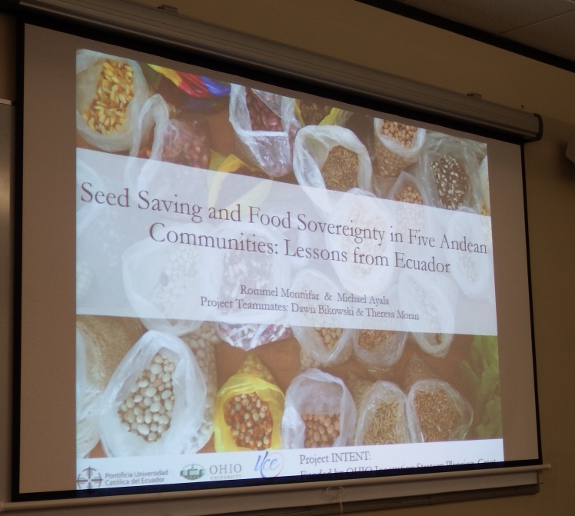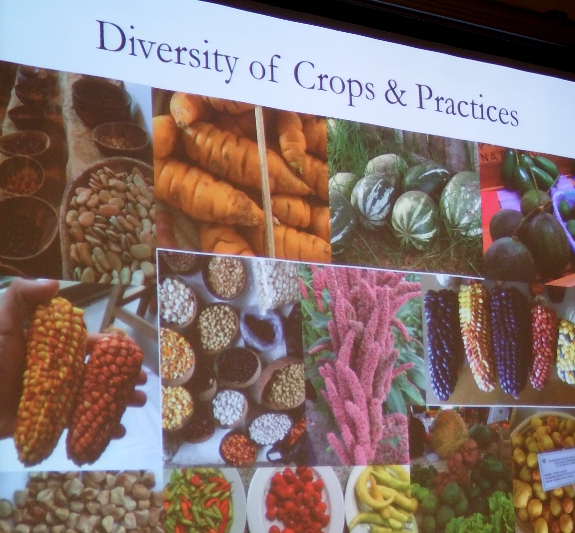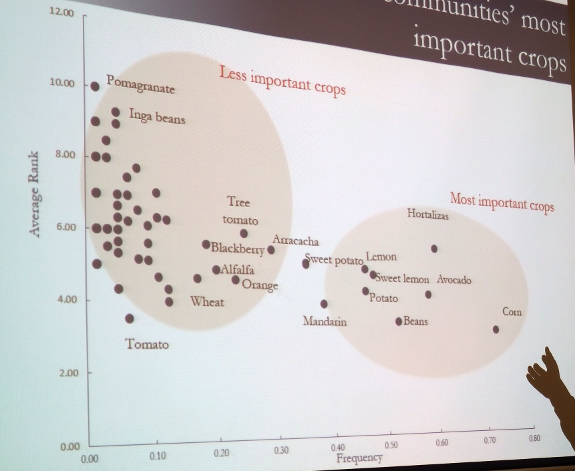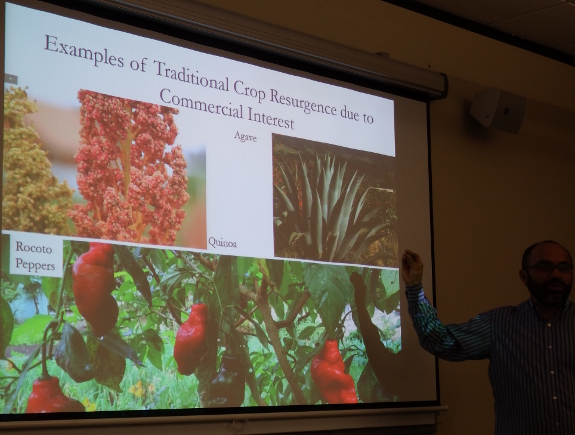
Ecuadorian seed saving

One of the best things
about living so close to a university is the free events we can access
by simply feeding a parking meter. Professor Theresa Moran expanded our
horizons with the movie Bugs --- all about edible insects --- last
fall. And she started 2018 off with a bang by bringing in a duo of
Ecuadorian researchers to regale us with information about seed-saving
in the equatorial mountains.

Rommel Montúfar and
Michael Ayala created a vivid image of small to mid-sized mountain
communities in which conventional crops are pushing many traditional
varieties out. Farmers (most of whom were in their sixties, subsisted
primarily on farming, and tended 2.5 acres of ground or less) reported
that their grandparents grew, on average, 83 types of crops in their
gardens. The current generation, in contrast, grows about seven.
Why the change in focus?
Farmers reported that locally saved seeds produced plants that were
tastier, hardier...but less pretty, less productive, and less easy to
sell to a national
or international market. It's hard to stick to the old ways when new
ways bring in immediate cash.

Which isn't to say the
outlook was all doom and gloom. There is still a strong culture of seed
saving and sharing in Ecuador, the latter of which includes both
swapping and simply giving seeds away. For example, an Ecuadorian
farmer never goes to visit a neighbor empty-handed. Instead, she brings
a basket full of the very best she has (often including seeds)...then is sent home with that
same basket full of the very best her neighbors have to offer.
(I'm not using the term
"she" to be politically correct here. About 60% of the farmers involved
the duo's study were women.)

There are also a few
traditional crops that are gaining national and international
importance, thus giving farmers a reason to plant them on a larger
scale. You've most likely heard of quinoa (even though this seed was
nearly unknown outside its traditional stronghold a few decades ago),
blue agave is gaining wide appeal when fermented into tequila, and
rocoto peppers are apparently the hot (pun intended) new pepper of
choice.
My favorite part of the
talk, though, was none of this. Instead, I feasted my eyes on images of
fruits and vegetables I've never seen before. What a treat to enjoy an
Ecuadorian breeze on a frigid Ohio day!
Want more in-depth information? Browse through our books.
Or explore more posts by date or by subject.
About us: Anna Hess and Mark Hamilton spent over a decade living self-sufficiently in the mountains of Virginia before moving north to start over from scratch in the foothills of Ohio. They've experimented with permaculture, no-till gardening, trailersteading, home-based microbusinesses and much more, writing about their adventures in both blogs and books.
Want to be notified when new comments are posted on this page? Click on the RSS button after you add a comment to subscribe to the comment feed, or simply check the box beside "email replies to me" while writing your comment.
- Remove comment
